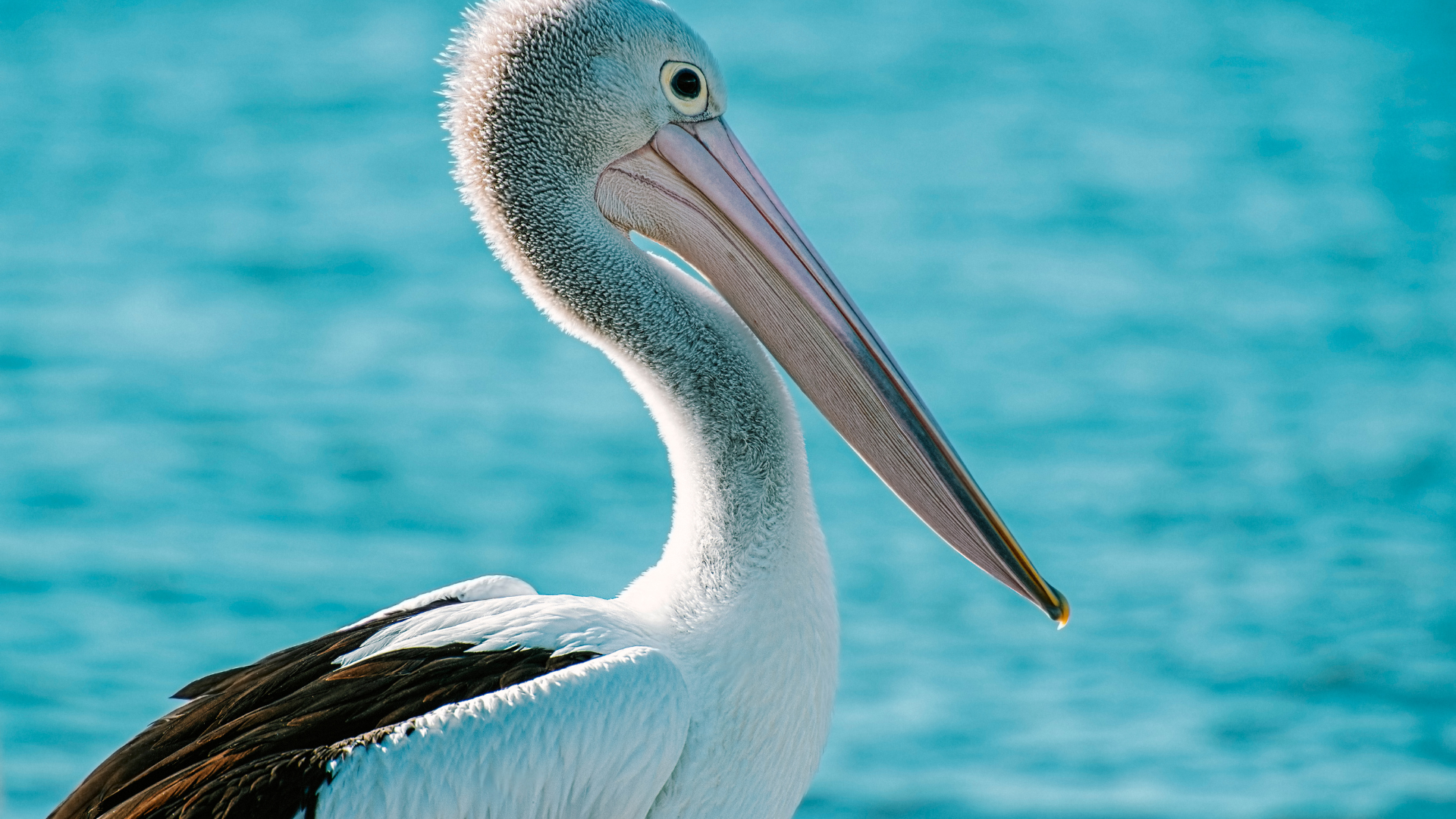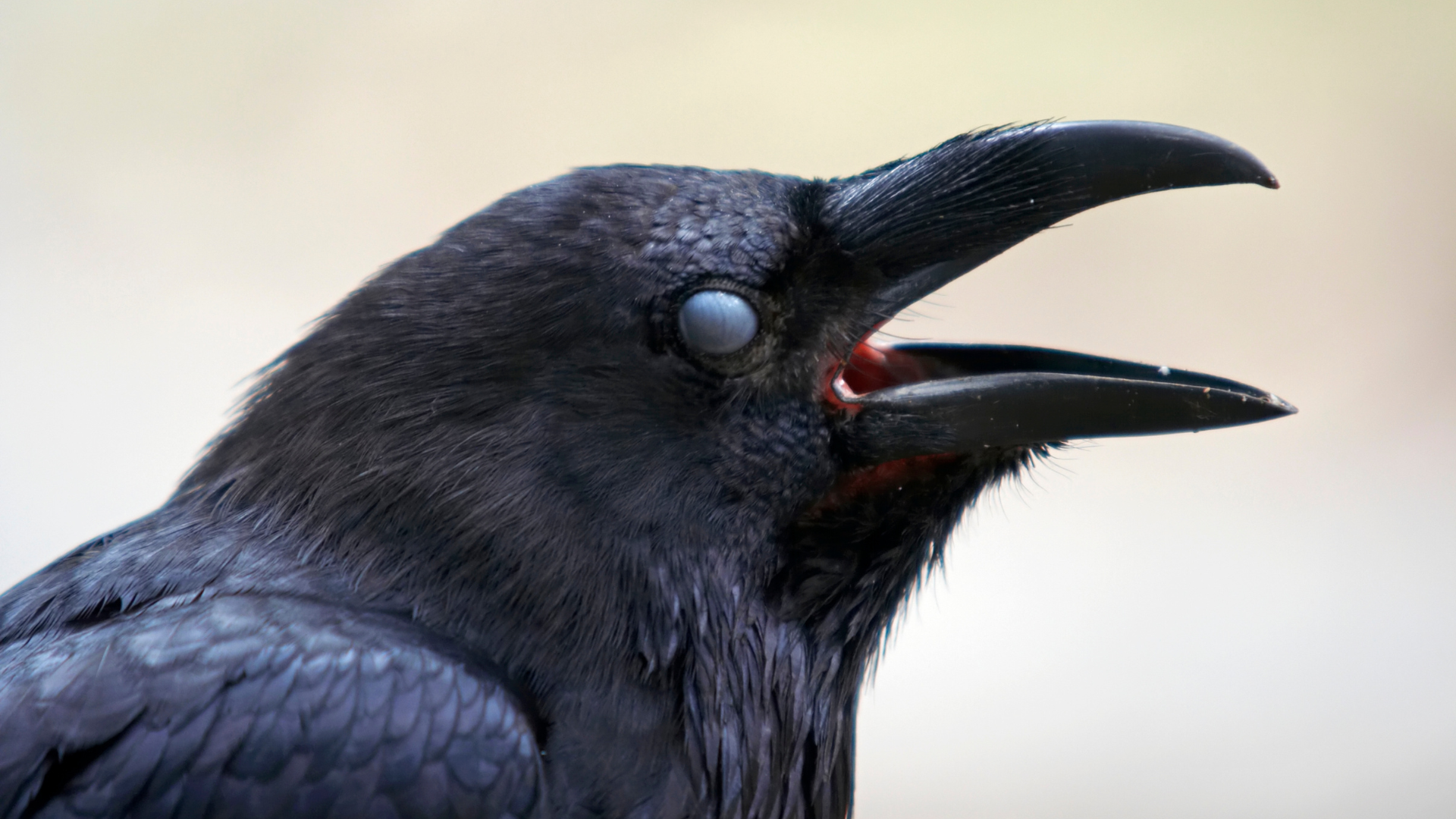Common name: Australian Pelican
Scientific name: Pelecanus conspicillatus
The Australian Pelican is instantly recognisable due to its immense bill, the largest of any living bird. This distinctive feature, along with its black and white plumage, makes it a familiar sight across Australia and beyond. It frequents coastal waters and inland lakes, and can even be spotted as a rare visitor in places like New Zealand.
The pelican commands attention with its grand presence. It soars effortlessly above the water and dives with precision to catch fish, always making a noticeable impression.
Description
The Australian Pelican is a medium-sized bird with a wingspan of 2.3 to 2.6 meters (7.5 to 8.5 feet) and a weight range of 4.5 to 7.7 kg (10 to 17 lbs.), though some can reach up to 13 kg (28.7 lbs.). Its bill, stretching up to 50 cm (20 inches), is its most notable feature.
The bird’s plumage is mostly white with a black wing panel and a white V on the rump. During courtship, the bill’s distal quarter and orbital skin turn shades of orange, while the pouch shifts to dark blue, pink, or scarlet. Females are slightly smaller, with bills about 34.6 cm (13.6 inches). Juvenile pelicans look similar to adults but have brown feathers instead of black and a smaller white wing patch.
Habitat
The Australian pelican is a familiar sight across Australia and New Guinea, where it frequents a variety of open water habitats. It prefers large, open lakes, rivers, estuaries, and swamps. In these areas, it finds ample space to forage and roost.
You might spot these pelicans on mudflats, sandy beaches, and even man-made structures like jetties. They are quite adaptable and will roost on any flat surface near water, whether natural or artificial. Their presence in urban parks and industrial areas reflects their flexibility, provided there’s open water. This versatility in habitat choice helps them navigate seasonal changes and varying food availability.
Diet
Australian pelicans feast mainly on fish. They plunge from the surface, using their large bills to scoop up prey. When hunting in groups, they collaborate to drive fish into shallower water, making capture easier. This coordinated effort can involve hundreds of pelicans in a single feeding event.
In times when fish are scarce, they turn to birds, small mammals, and reptiles. Pelicans also scavenge from other birds, taking advantage of available food. This behaviour, known as kleptoparasitism, shows their ability to adapt to different feeding conditions. Whether hunting solo or in groups, Australian pelicans display a varied diet that supports their survival in diverse habitats.
Behaviour and Breeding
Australian pelicans follow no fixed migratory pattern. Their movements depend on food availability, causing them to scatter or converge in large groups according to fish and prey abundance.
Breeding begins around two to three years of age, varying by location. In tropical regions, it occurs in winter, while in southern Australia, it happens during spring. Pelicans choose nesting sites on islands or near water, creating shallow depressions in sand or earth, sometimes lined with grass. Occasionally, they build nests on grassy platforms or bushes.
These birds breed communally, forming colonies on islands such as North Peron Island or in sheltered areas near lakes and seas. They lay one to four eggs, typically two, which are chalky-white and often appear scratched and dirty. Incubation lasts 32 to 35 days. Chicks hatch naked and quickly develop grey down feathers.
In the nest, larger chicks receive more food, while smaller ones often face starvation or siblicide. For the first two weeks, they are fed regurgitated liquid. As they grow, their diet shifts to fish and invertebrates. At around three months, the young pelicans fledge and prepare to leave the nest.
Conservation Status
The Australian pelican is listed as "Least Concern" on the IUCN Red List. Its population is stable, benefiting from large breeding colonies that form during rare inland floods, such as the notable event at Lake Eyre in 1990, where over 200,000 pelicans were counted. The species thrives in artificial environments like reservoirs as long as human disturbance is minimal. Although they are drawn to human activity, such as at Monkey Mia, they remain sensitive during nesting. Legal protections and limited pollution impact help maintain their stable status.
Fun Facts
Australian pelicans are intriguing birds with some unusual traits. Their skeleton is remarkably light, comprising only 10% of their body weight, which aids their flight. Although they cannot flap their wings continuously, they excel at soaring. They can stay in the air for up to 24 hours and travel hundreds of kilometres, using thermals to gain height.
Sometimes, these pelicans display cannibalistic behavior, preying on their own kind, which is a rare but documented occurrence. In Indigenous Australian culture, pelicans are revered. The Wangkamura people of South Australia believe these birds are linked to the creation of opals and fire. They also consume up to four pounds of fish daily.
Similar Species
The Australian pelican bears a resemblance to other pelican species, including the Dalmatian and American White Pelicans. The Australian pelican is smaller than the Dalmatian pelican and features a different colour pattern. Its wings are white, and its bill is pink, while the Dalmatian pelican has darker feathers and contrasting bill colors. The American White pelican, another large species, has a broader, more rounded bill and occupies a different geographical range. Though they share common pelican traits, these variations in size, coloration, and geographic distribution help distinguish them from one another.




